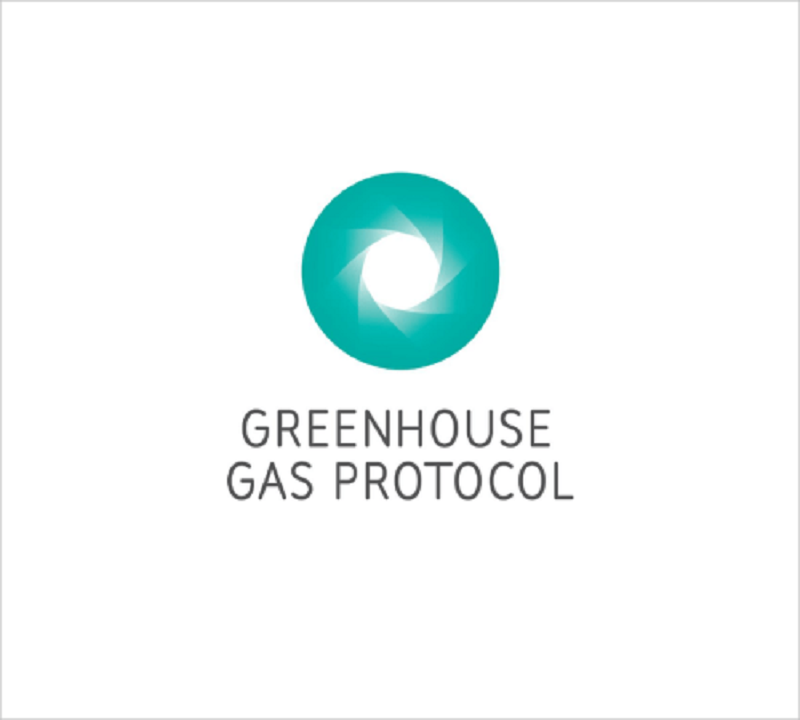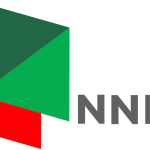General
GHG Protocol Standards that You Should Know

The earth is warming up faster than any other moment in the past, and it is time to rethink our strategies for cooling it down. During the 2015 Paris Climate Conference (COP21), countries committed to limiting further global warming by cutting down greenhouse (GHG) emissions.
Corporates have a bigger role in addressing global warming, and their leadership needs to understand the GHG protocol to help them measure and manage their emissions.
So, how well do you know the GHG protocol? Here is a deeper look, outlining the scopes of GHG emissions and the main standards that you should know about.
What is the GHG Protocol?
Greenhouse Gas Protocol is an organization that was created in 1998 through a partnership between World Business Council for Sustainable Development and World Resources Institute. The protocol was developed to help companies cut down their emissions by setting standards for them. As we are going to see shortly, the GHG protocol provides standards, tools, and training for companies and governments on the best ways to manage emissions.
The protocol operates closely with industry associations, governments, businesses, and NGOs, to create standardized frameworks for emission reduction and reporting to stakeholders. Notably, these standards have evolved over time to cater to the complex problem of global warming.
For example, the standards do not just help companies to cut down their carbon footprint from within but also the entire value chain.
GHG protocol is used by a wide range of companies, and your company is also likely to fit well. Nine out of ten Fortune 500 Companies reporting to CDP use the GHG Protocol. To apply the protocol in your company, make sure to get the right ESG reporting framework and expertise from Diginex.com.
GHG Protocol: The Three Scope Emissions
One of the things that make the GHG protocol famous is its emission classifications. The protocol classifies them into three:
- Scope One: These are emissions that result from the internal operations of a company.
- Scope Two: These emissions are generated through the consumption of purchased steam, heat, cooling, and electricity.
- Scope Three: These are indirect emissions, mainly resulting from the extended supply chain. Note that these emissions must include both downstream and upstream operations.
We must indicate that measuring Scope 3 emissions and to some extent, Scope 2 Emissions is not a simple task. This is why you should consider working with experts at Diginex.com.
GHG Protocol Standards
Here are the main GHG protocols and who they are prepared for:
- Corporate Standard: This protocol is meant for organizations preparing corporate-level GHG emissions inventory. The lovely thing about this standard is that it not only helps companies cut down emissions but also comes in handy, helping them increase transparency.
- GHG Protocol for Cities: Cities are major carbon emission sources, contributing about 75% of all GHG emissions per year. This standard is used to provide for a consistent and transparent measure of GHG emissions in urban areas/ cities. Furthermore, it allows for benchmarking via comparable data.
- Mitigation Goal Standard: Unlike the first two standards above, the mitigation standard is used for developing national and subnational mitigation objectives. It was created to help follow policies and actions set for cutting down GHG emissions.
- Product Standard: With this standard, you are able to look at the entire lifecycle of a selected product. Then, you can notice where more emissions are taking place and then identify opportunities for cutting down emissions.
- Corporate Value Chain Standard: This standard sets out the guidance for companies to evaluate their GHG in their entire value chain. It is very useful for helping companies look at the emissions outside of their operations or walls.
As you can see, GHG protocol is an important pillar in ESG sustainability reporting. To apply it correctly, you need to ensure that the right process is followed, from company review to report generation. It can be pretty challenging, and the best way to get it right is by working with experts. Visit Diginex.com now to learn more about GHG protocol, its application, and optimizing the associated benefits.
General
Court to Rule on Malami’s Bail Application January 7

By Adedapo Adesanya
A Federal High Court sitting in Abuja has fixed January 7 to hear the bail application of former Attorney General of the Federation and Minister of Justice, Mr Abubakar Malami, over alleged money laundering.
Recall that the same court had ordered the remand of Mr Malami at the Kuje Correctional Centre.
The Senior Advocate of Nigeria, his son, Abdulaziz, and one of his wives, Mrs Bashir Asabe, are standing trial predicated on a 16-count charge preferred against them by the Economic and Financial Crimes Commission (EFCC).
The trio, who are accused of laundering N8.7 billion, pleaded not guilty to the charges when they were arraigned on December 29, 2025.
Following their plea of not guilty, Justice Emeka Nwite ordered their remand at Kuje Correctional Centre till January 2, 2026, when their written bail application would be argued by his legal team.
In the charge, identified as FHC/ABJ/CR/700/2025, the defendants were accused of conspiring to conceal, disguise, and retain proceeds from illegal activities.
The indictment claimed that they used multiple bank accounts, corporate entities, and high-value real estate transactions over nearly ten years to indirectly acquire the illicit funds.
According to the charge sheet, the alleged offences took place between 2015 and 2025, primarily within the Federal Capital Territory, Abuja, during Malami’s time as the country’s Attorney-General.
The EFCC alleged that Malami and his son used Metropolitan Auto Tech Limited to hide N1.014 billion in a Sterling Bank account from July 2022 to June 2025.
They were also accused of depositing an additional N600.01 million between September 2020 and February 2021.
The properties in question include a luxury duplex on Amazon Street, Maitama, purchased for N500 million; a property on Onitsha Crescent, Garki, bought for N700 million; and another in Jabi District for N850 million.
Additional acquisitions include real estate on Rhine Street, Maitama (N430 million); in Asokoro District (N210 million and N325 million); and at Efab Estate, Gwarimpa (N120 million).
The EFCC further alleges that Mr Malami used unlawful proceeds totaling N952 million to acquire multiple properties in Abuja, Kano, and Birnin Kebbi between 2018 and 2023.
The acquisitions were allegedly made through proxies and corporate entities to obscure ownership.
The commission claimed that the alleged actions violate the provisions of the Money Laundering (Prohibition) Act, 2011 (as amended) and the Money Laundering (Prevention and Prohibition) Act, 2022.
General
Train 7: Plant Operators Petition EFCC to Investigate Fraud, Tax Deductions

By Adedapo Adesanya
The Nigeria Association of Plant Operators (NAPO) has petitioned the Economic and Financial Crimes Commission (EFCC) to investigate allegations of tax deduction and non-remittance fraud linked to the NLNG Train 7 project.
Train 7 is a major expansion project of the Nigeria Liquefied Natural Gas (NLNG) facility on Bonny Island, Rivers State, Nigeria. It involves building a seventh “train” (processing unit) at the LNG plant to significantly increase Nigeria’s LNG production capacity and strengthen the country’s role as a global supplier of cleaner energy.
NAPO’s President General, Mr Harold Benstowe, alongside four other officials, appeared at the EFCC Port Harcourt Zonal Office in Port Harcourt, to adopt a petition accusing Daewoo Engineering & Construction Nigeria and others of alleged unlawful tax deductions from workers on the multibillion-dollar NLNG Train 7 gas plant construction project.
According to NAPO, the EFCC received the delegation and guided them through the formal adoption of the petition, paving the way for what the union described as a “proper forensic investigation” into the alleged financial misconduct.
“The EFCC has assured the victims that it will conduct a thorough investigation to get to the root of the matter,” Mr Benstowe said, describing the development as a major step toward accountability in the construction segment of Nigeria’s oil and gas industry.
It also raised that the allegations strike at the heart of compliance risks surrounding one of Nigeria’s most strategic gas investments, with potential implications for contractors, regulators and investor confidence in large-scale energy projects.
Mr Benstowe called on workers involved in the NLNG Train 7 project to actively support the investigation by submitting documentary evidence, particularly payslips allegedly showing tax deductions by Daewoo E&C Nigeria.
“We encourage all affected workers to freely come forward with more evidence to assist the EFCC in carrying out a comprehensive investigation,” he said.
He also dismissed reports of intimidation, warning that the union would resist any attempts to suppress whistleblowers.
“All victims should ignore threats or discouragement from any quarters. This is no longer business as usual. We are prepared for a big showdown to ensure everyone involved is brought to book,” Mr Benstowe declared.
The NAPO leader framed the petition as part of a broader struggle for financial transparency and workers’ rights in Nigeria’s oil and gas construction value chain, stressing that the outcome would send a strong signal to contractors operating on high-value energy projects.
General
FIRS Officially Transitions into NRS

By Adedapo Adesanya
The Nigeria Revenue Service (NRS) has unveiled its institutional brand identity as it officially transition from the Federal Inland Revenue Service (FIRS) to the newly established revenue collection agency as gazetted.
The transition was marked with the unveiling of the agency’s new logo, according to a statement from Mr Dare Adekanmbi, special adviser to the chairman of NRS, Mr Zacch Adedeji.
Speaking at the unveiling event in Abuja on Wednesday, Mr Adedeji said the new identity represents a significant milestone in the evolution of Nigeria’s revenue administration framework.
The taxman said the unveiling reflects a renewed commitment to a more unified, efficient, and service-oriented revenue system aligned with Nigeria’s economic transformation agenda and global best practices.
He said the new identity signals continuity of purpose, strengthened institutional capacity, and a forward-looking approach to supporting taxpayers and national development.
According to the statement, the NRS said it remains committed to transparency, partnership, and service excellence.
“The unveiling of this new identity represents not an end, but the beginning of a strengthened relationship between the revenue authority and the Nigerian public—built on trust, clarity, and shared prosperity,” the statement reads.
It was also stated that the service came into operation following the signing of its enabling law — the Nigeria Revenue Service Establishment Act 2025 — by President Bola Tinubu in June.
-

 Feature/OPED6 years ago
Feature/OPED6 years agoDavos was Different this year
-
Travel/Tourism9 years ago
Lagos Seals Western Lodge Hotel In Ikorodu
-

 Showbiz3 years ago
Showbiz3 years agoEstranged Lover Releases Videos of Empress Njamah Bathing
-

 Banking8 years ago
Banking8 years agoSort Codes of GTBank Branches in Nigeria
-

 Economy3 years ago
Economy3 years agoSubsidy Removal: CNG at N130 Per Litre Cheaper Than Petrol—IPMAN
-

 Banking3 years ago
Banking3 years agoFirst Bank Announces Planned Downtime
-

 Banking3 years ago
Banking3 years agoSort Codes of UBA Branches in Nigeria
-

 Sports3 years ago
Sports3 years agoHighest Paid Nigerian Footballer – How Much Do Nigerian Footballers Earn













